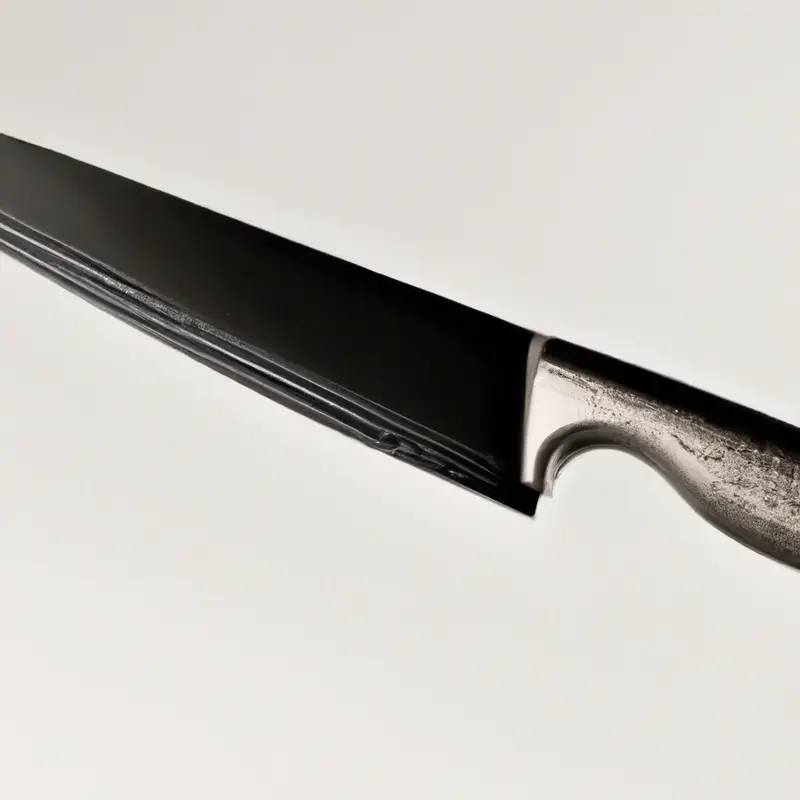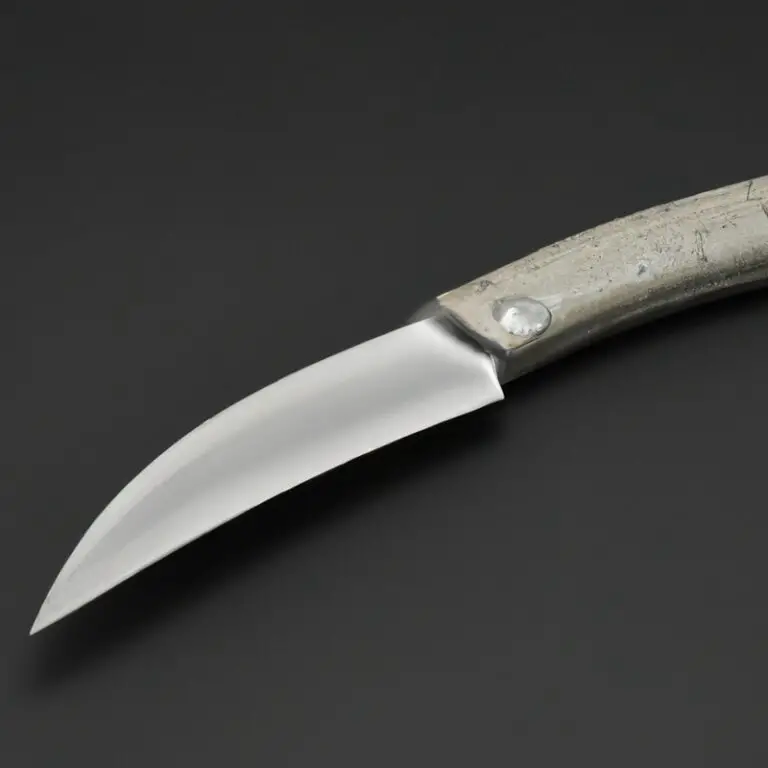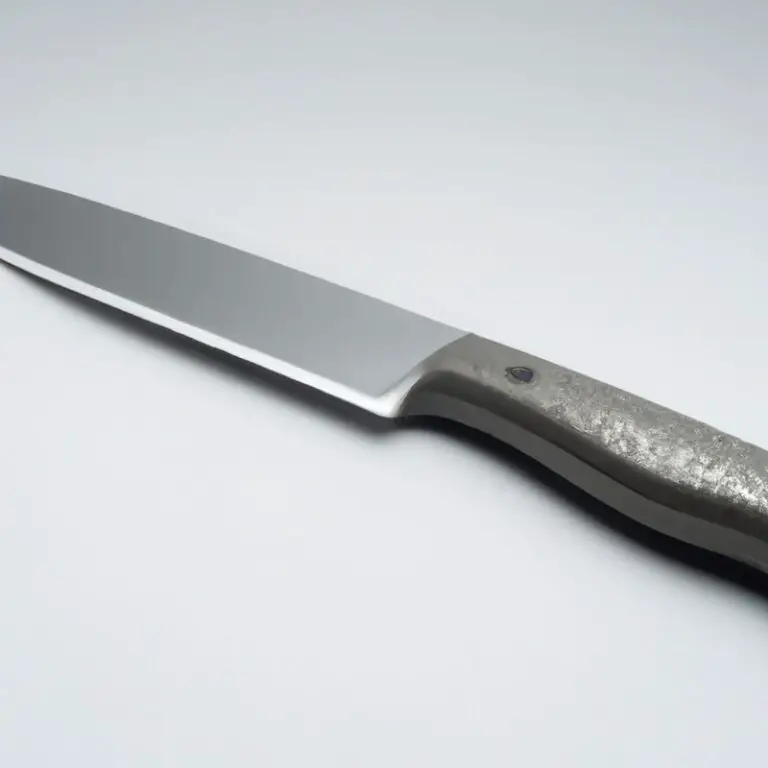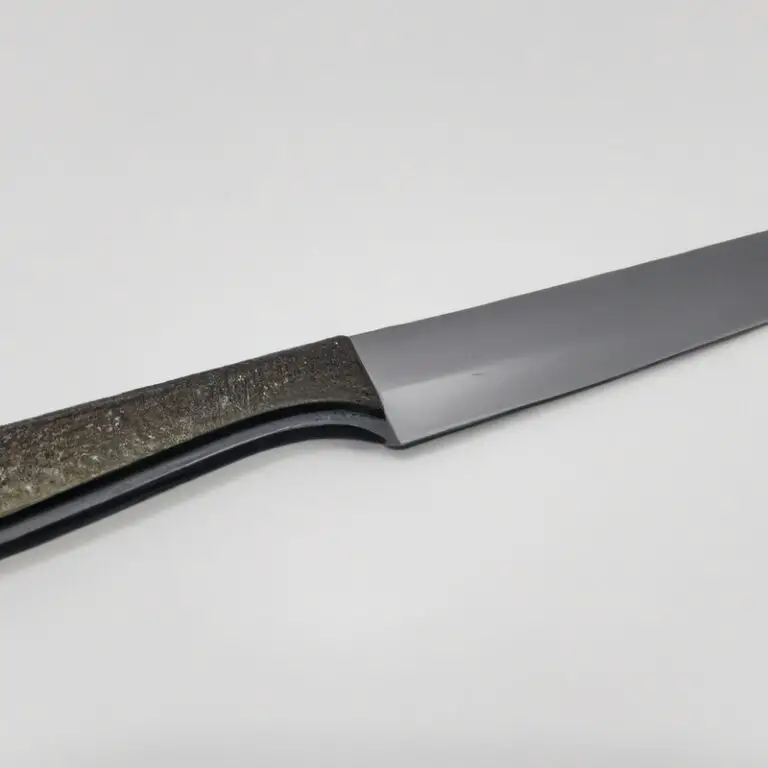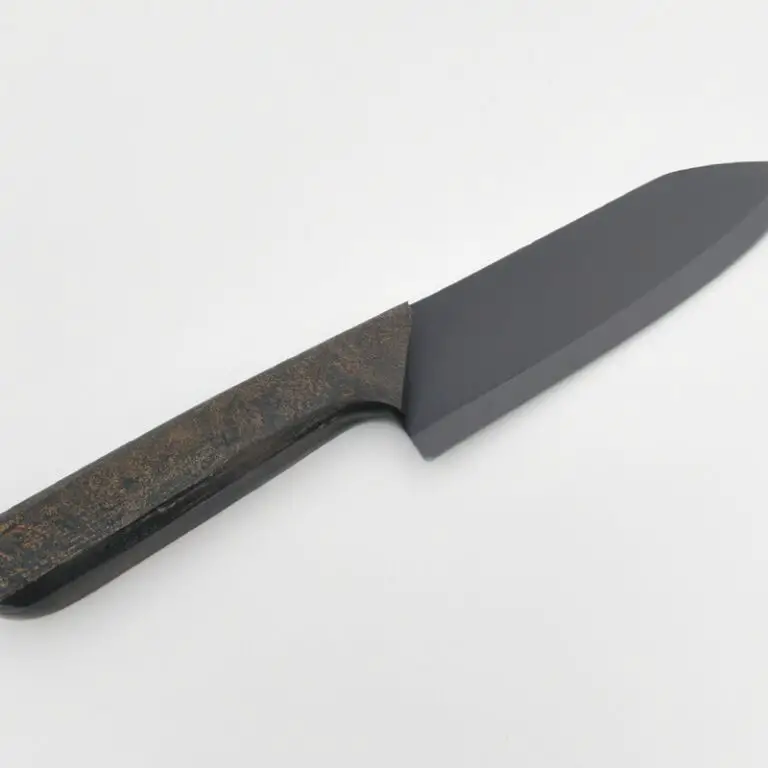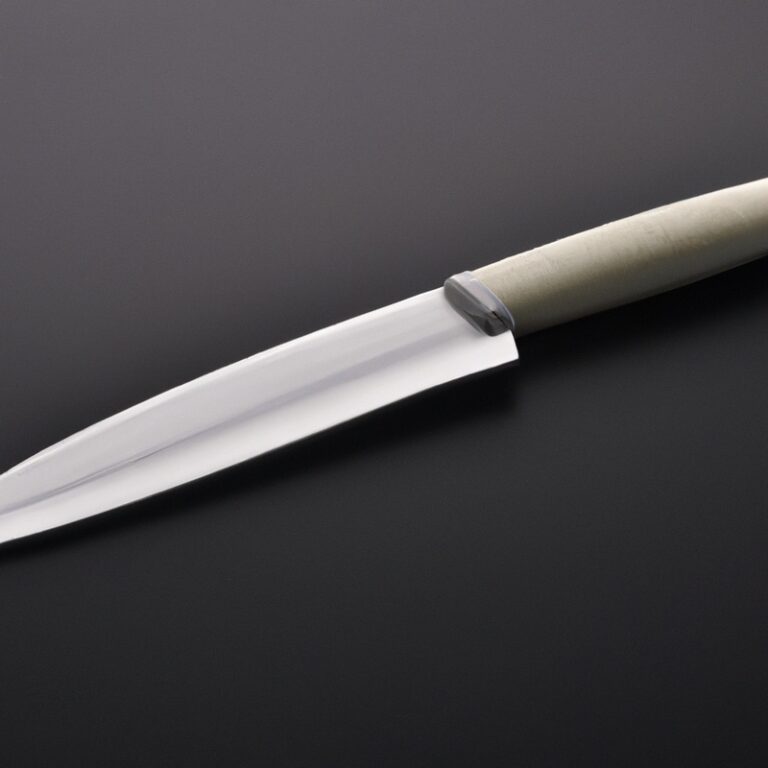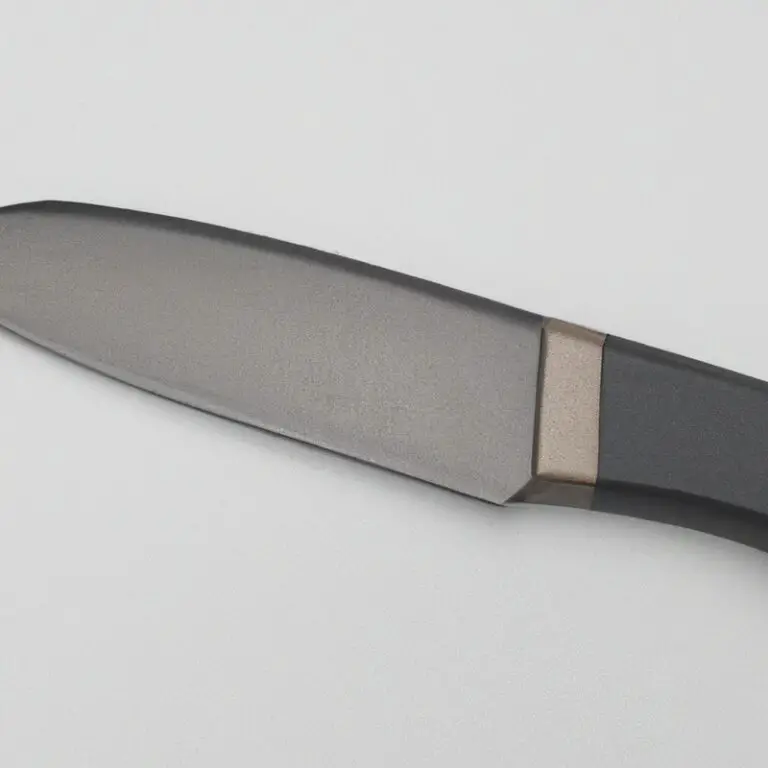How To Achieve Precise Julienne Cuts With a Gyuto Knife? Masterfully
Key Takeaways:
- The Gyuto knife is a versatile tool that can help you achieve precise julienne cuts with ease.
- Mastery of proper techniques, such as hand placement and motion, is essential to achieving consistent julienne cuts.
- Practice and patience are key to improving your julienne cutting skills and achieving sharper, more precise cuts.
- Investing in a high-quality Gyuto knife can make all the difference in achieving perfect, restaurant-quality julienne cuts.
Have you ever been frustrated by your inability to achieve precise julienne cuts? Look no further than the Gyuto knife – a versatile Japanese knife that can make all the difference in your vegetable cutting game.
However, mastering the art of julienne cuts requires more than just a great knife.
From understanding the anatomy of your Gyuto knife to perfecting your technique and selecting the right ingredients, this beginner’s guide covers all the bases. Read on to learn how to achieve straight, consistent julienne cuts every time and elevate your culinary game.
| Steps | Instructions |
|---|---|
| 1 | Choose a sharp and sturdy Gyuto knife |
| 2 | Wash and dry the vegetables thoroughly |
| 3 | Cut off the top and bottom parts of the vegetable, creating a flat surface |
| 4 | Create a rectangular shape by cutting the vegetable lengthwise into 4 equal sides |
| 5 | Hold one of the 4 sides and slice it diagonally into thin, uniform strips |
| 6 | Repeat step 5 on the remaining sides until you have achieved the desired amount of julienne strips |
Understanding the anatomy of a Gyuto knife: A beginner’s guide to knife parts and how they impact julienne cuts
To achieve precise julienne cuts, it is essential to understand the anatomy of a Gyuto knife. A Gyuto knife typically consists of three parts: the blade, the handle, and the bolster.
The Blade: The blade is the most important part of the Gyuto knife.
It is usually made of high-carbon steel or stainless steel, and it is the blade that determines the sharpness, balance, and weight of the knife. For julienne cuts, a long, narrow blade with a sharp point is preferred, which allows for precise cuts.
The Handle: The handle of the Gyuto knife is typically made of wood, plastic, or composite material.
The size, shape, and weight of the handle impact how comfortable and secure the knife feels in your hand. A comfortable and secure handle is essential for precise julienne cuts.
The Bolster: The bolster is the part of the Gyuto knife that supports the blade and connects it to the handle.
A good bolster enhances the balance of the knife and provides additional safety. Overall, understanding the anatomy of a Gyuto knife is crucial to achieve precise julienne cuts.
When selecting a Gyuto knife, ensure that the blade is long, narrow, and sharp, the handle is comfortable and secure, and the bolster is well-designed.
Safety tips for using a Gyuto knife: How to ensure your own safety and protect your knife while making julienne cuts
Using a Gyuto knife while making julienne cuts can be an intimidating task, but with proper safety precautions, you can avoid accidents and protect your knife for longer use. Here are some safety tips for using a Gyuto knife:
- Always use a sharp knife to reduce the force required to make a cut and minimize the risk of the blade slipping.
- Keep your fingers and hands away from the blade while cutting. Use a cutting board or other surface to stabilize the food you are cutting.
- Ensure that your knife is properly balanced to avoid unnecessary fatigue or strain on your wrist. Also, choose a knife with a comfortable handle to minimize hand fatigue.
- Never use your knife to open cans, bottles, or any other packaging that is not food-related. Doing so can damage your knife’s blade or even cause it to break.
- When not in use, store your Gyuto knife in a knife block, sheath, or on a magnetic strip to prevent damage and accidental injury.
By following these tips, you can ensure your own safety and protect your Gyuto knife while making julienne cuts.
Choosing the right Gyuto knife for julienne cuts: Exploring key factors such as blade length, material, and handle design
When choosing a Gyuto knife for julienne cuts, there are a few key factors to consider. Firstly, blade length is important as it determines how much control you have over the knife and the size of your cuts.
A blade length of 210-240 mm is ideal for julienne cuts.
Secondly, the material of the blade will affect its sharpness and durability. High-carbon stainless steel is a popular choice as it is sharp and easy to maintain.
Lastly, the handle design should be comfortable and provide a secure grip to prevent accidents.
A full tang handle made of durable materials like wood or synthetic materials is a great option. By taking these factors into consideration, you can choose a Gyuto knife that is best suited for julienne cuts.
Remember to invest in a high-quality knife that will last longer and offer better precision.
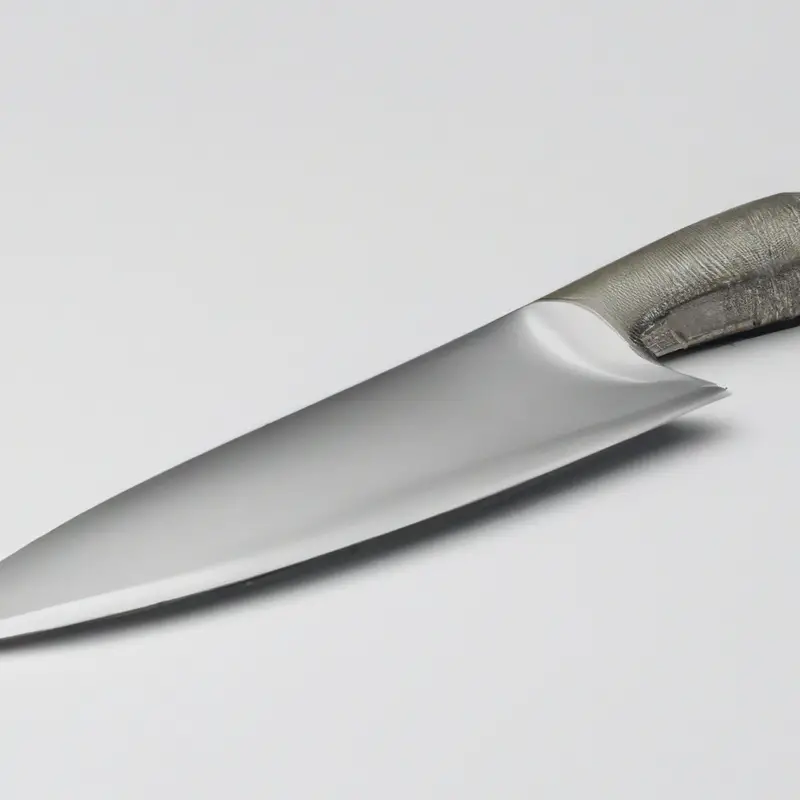
Sharpening and maintaining your Gyuto knife for precise julienne cuts: A step-by-step guide to keeping your knife in optimal condition
To achieve precise julienne cuts with a Gyuto knife, maintaining it in optimal condition is essential. Here is a step-by-step guide for sharpening and maintaining your Gyuto knife:
- Sharpening: Begin sharpening with a coarse grit stone, followed by a fine grit stone. Hold the blade at an angle of approximately 15 degrees and use a circular motion. Repeat the process with the fine grit stone.
- Honing: Use a honing rod to hone the edge of the blade by holding the rod vertically and running the blade down the length of the rod from heel to tip, using a consistent and fluid motion.
- Cleaning: Keep the knife clean and dry to avoid corrosion. Wash the knife with mild soap and warm water, and dry it with a soft cloth.
- Storage: Store the knife in a knife block or on a magnetic strip. Avoid storing it in a damp or humid environment.
By following these steps and regularly maintaining your Gyuto knife, you can ensure that it stays in optimal condition and provides you with precise, consistent julienne cuts every time.
Proper technique for holding and using a Gyuto knife: Tips and tricks to help ensure straight, consistent julienne cuts every time
Proper technique is crucial for achieving straight and consistent julienne cuts every time with a Gyuto Knife. Hold the knife with your right hand and grip the handle firmly while placing your index finger on the blade’s spine for better control.
The thumb and middle finger should grip the handle’s bottom.
Apply even, firm pressure to create straight cuts and keep the blade perpendicular to the cutting board. For consistent cuts, aim for uniform thickness across the vegetable or fruit.
Always use a sharp blade and make sure to sharpen the knife regularly.
Practice positioning your blade at a 45-degree angle while cutting to achieve julienne cuts with precision and uniformity. Remember to keep your fingers spread apart and curl them under when cutting towards the blade to avoid injuries.
These tips and tricks can help you master the proper technique for using a Gyuto Knife for julienne cuts.
Selecting ingredients for julienne cuts: How to choose the right vegetables and fruits and prepare them for cutting
Choosing the right ingredients is crucial for achieving precise julienne cuts with a Gyuto knife. When it comes to vegetables, opt for firm and long varieties such as carrots, zucchini, cucumber, onion, bell pepper, and celery.
The thinner they are, the easier they are to cut evenly.
For fruits, firm varieties such as apples, pears, and mangoes work well. Avoid soft and mushy fruits or vegetables as they are difficult to cut uniformly.
Before cutting, ensure that the ingredients are washed and dried thoroughly.
Trim the ends and peel the vegetables and fruits if needed. For vegetables like carrots, slicing them lengthwise in half or into manageable pieces can help achieve straighter cuts.
For round vegetables like onions and bell peppers, cut them in half and place the flat side down for easier cutting.
When cutting, use a back-and-forth motion with the knife while applying light pressure. Maintain a consistent angle and speed as you cut through the ingredient.
Repeat this process until the desired thickness of julienne strips is achieved.
In summary, selecting the right ingredients and preparing them properly plays a significant role in achieving perfect julienne cuts. Choose long and firm vegetables and fruits, trim, wash and dry them properly, and cut them in a uniform manner to achieve evenly sliced strips.
The art of julienne cutting with a Gyuto knife: Understanding the nuances of knife angle, pressure, and speed to achieve the perfect cut
The art of julienne cutting requires an understanding of the nuances of knife angle, pressure, and speed. When using a Gyuto knife, it is important to maintain a consistent angle of around 30 degrees while applying gentle, but firm pressure to avoid bruising or tearing the ingredient.
Slowly and steadily, guide the blade through the ingredient while being mindful of the blade’s speed.
A rushed or jerky motion can result in uneven cuts. Practicing these techniques can help achieve the perfect julienne cut with a Gyuto knife.
Creative applications for julienne cuts: Ideas for incorporating your perfectly cut ingredients into a range of dishes and cuisines
Julienne cuts are a versatile technique that can be used to add unique textures and flavors to a variety of dishes. Here are some creative ways to incorporate your perfectly cut julienne ingredients into your cooking:
- Salads: Add julienne cut carrots, cucumbers, and beets to your salads for a crunchy texture and vibrant color.
- Stir fry: Julienne cut vegetables such as bell peppers, onions, and broccoli for a quick and easy stir fry.
- Sandwiches: Add julienne cut avocados, cucumbers, and roasted red peppers to your sandwiches for added flavor and texture.
- Garnishes: Use julienne cut vegetables or fruits as a garnish for soups, stews, or cocktails to add a visually appealing touch.
- Wraps: Create healthy wraps by filling rice paper or lettuce leaves with julienne cut vegetables, protein, and dipping sauce.
- Pasta dishes: Add julienne cut zucchini, mushrooms, and bell peppers to your pasta dishes for a colorful and delicious meal.
- Sushi: Incorporate julienne cut vegetables such as carrots, cucumbers, and radishes into your sushi rolls for added texture and flavor.
- Crudites: Serve a platter of julienne cut vegetables with dips for a healthy and appetizing snack.
By incorporating julienne cuts into your cooking, you can elevate the flavor and texture of your dishes while also adding a visually appealing touch.
Comparing julienne cuts with other techniques: How julienne cuts differ from other common knife techniques and when to use each one
Julienne cuts differ from other common knife techniques like slicing, dicing, and chopping. Slicing involves cutting food into thin, uniform slices, whereas dicing creates cubes or small chunks.
Chopping involves cutting food into rough, irregular pieces.
Julienne cutting involves cutting food into thin, uniform strips, which makes it ideal for dishes that require even cooking and presentation. It is often used for vegetables such as carrots, bell peppers, and cucumbers.
When choosing which technique to use, consider the texture and size of the ingredient and the desired outcome of the dish.
Slicing may be better for softer, delicate ingredients like tomatoes or fish, while dicing may be ideal for stews or soups. Chopping is best for ingredients that do not require a precise shape and are going to be cooked for a long time.
On the other hand, if you want to showcase the ingredients and create a beautiful presentation, julienne cutting is ideal.
In summary, julienne cutting is a specific technique that is best used for creating uniformly thin strips of food for even cooking and presentation. When deciding which technique to use, consider the texture, size, and desired outcome of the dish.
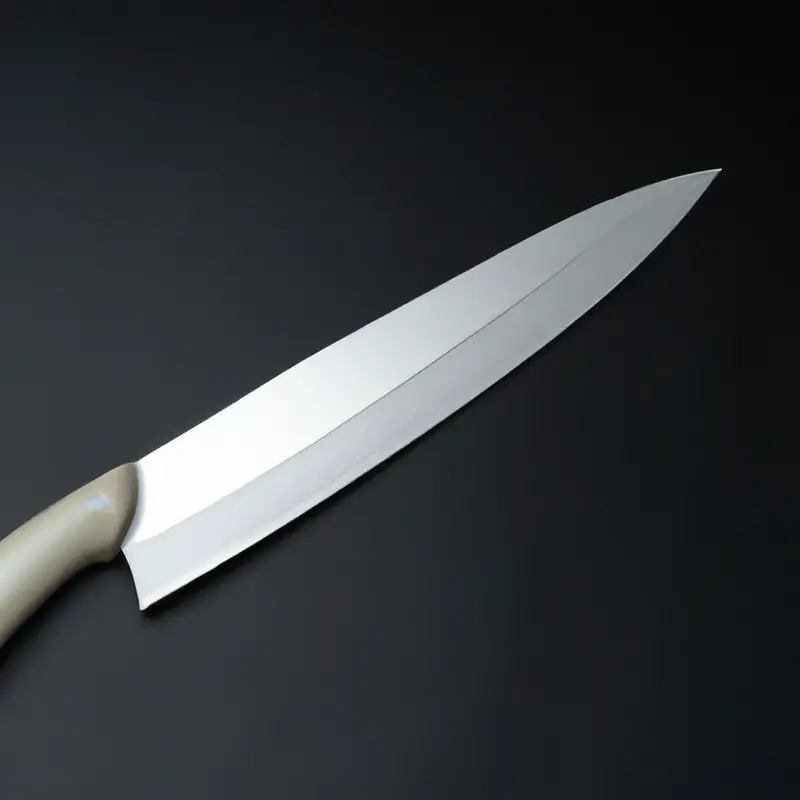
Troubleshooting common julienne cutting issues: Tips and solutions for common problems such as uneven cuts or difficulty cutting tougher ingredients
Troubleshooting common julienne cutting issues can make the difference between a perfect dish and a disappointing one. Some common problems you may encounter include uneven cuts or difficulty cutting tougher ingredients.
Here are some tips and solutions to help you overcome these challenges: Uneven cuts:
- Ensure your knife is sharp: Use a sharpening stone or honing rod to maintain a sharp edge.
- Use a steady hand: Keep your hand still while making each cut to prevent uneven slices.
- Practice makes perfect: The more you practice, the better you will become.
Difficulty cutting tougher ingredients:
- Choose the right ingredients: Softer ingredients like zucchini are easier to julienne than hard vegetables like carrots.
- Pre-cut your ingredients: Cutting your ingredients into smaller, more manageable pieces can make it easier to julienne.
- Use the proper technique: Apply more pressure and a slightly different angle when cutting harder vegetables.
By following these tips and solutions, you can troubleshoot common julienne cutting issues and achieve precise julienne cuts every time.
Final Verdict
Mastering the art of julienne cutting with a Gyuto knife requires practice, patience, and a keen eye for detail. By understanding the anatomy of your knife, prioritizing safety, and following proper maintenance techniques, you’ll be able to achieve straight, consistent cuts every time.
With a little creativity and experimentation, your julienne-cut ingredients can be used in a variety of culinary applications to elevate your dishes to the next level.
By following the tips and techniques outlined in this beginner’s guide, you’ll be well on your way to becoming a julienne-cutting pro. Remember, precision is key, but don’t be discouraged by common cutting issues.
Keep honing your skills, and you’ll soon be impressing friends and family with perfectly julienned ingredients in no time.

